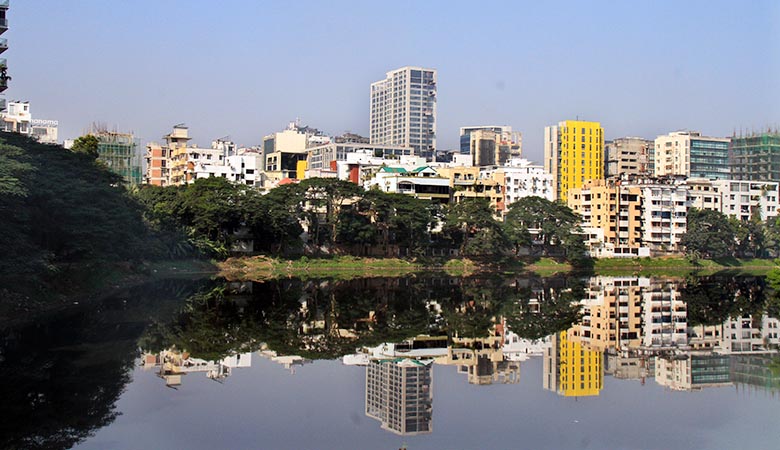Gulshan lake water quality improves

Water quality of Gulshan Lake has improved due to various initiatives taken by the city authorities and other environmental organisations. On June 2015 Bangladesh High Court ordered the government to free portions of Gulshan Lake that had been encroached upon. On April 2017, the Capital Development Authority under the Ministry of Housing and Public Works destroyed a number of structures on the banks of the lake to make way for the building of pathway on the banks of the lake. However, since then the quality of the water has been improving slowly.
The Lake which once used to produce gentle blow of cool air have turned into dumping grounds of filths and wastages from where constant pervasive odour has been flowing constantly creating health hazards of the nearby people and passersby. Experts are of the opinion that still drains and sewerage pipes connected to the lake from nearby households has been the major polluters of Gulshan Lake.
Earlier, land encroachment, accelerated demographic pressure and land fill and continuation of all sorts of banned activities in the ECA turned Gulshan Lake into an ecologically dead one.
Gulshan Lake has a nice walkway on its western bank, and every morning a lot of residents including many women from Gulshan, Badda and nearby areas take their morning walk. Unfortunately, the bank of the lake is sullied by refuse and garbage being dumped there; mostly by the residents of the flats and houses bordering the western lakeside.
The quality of the lake water was deteriorated to such extent that people did not come close to the water edge for their refreshment and recreation because of the ill-maintenance and poor treatment by the people themselves. Still the lake water is not properly maintained and it has lost its clarity and nutrient balance.
Over the last years we have witnessed continued decline in water quality across six water bodies in Dhaka, highlighting the centralization of water resources near more affluent neighbourhoods. If these patterns continue unchecked in the future, water access for the most vulnerable citizens in Dhaka will become more challenging. Researchers and policymakers should not turn a blind to these problems and continue to recommend short-term and long-term lake management strategies and policies.
However, in order to improve the water quality of Gulshan Lake, direct discharge of untreated sewage and dumping of solid wastes into the lake must be banned. Also performing commercial and other banned activities in the ECA must be prohibited. Last but not the least, a lake management authority comprising all stakeholders could be formed for the conservation of the lake. Authorities concerned should integrate necessary programs to clean up the lake and restore it to its natural state. No doubt such a step will be will be deeply appreciated by all.




